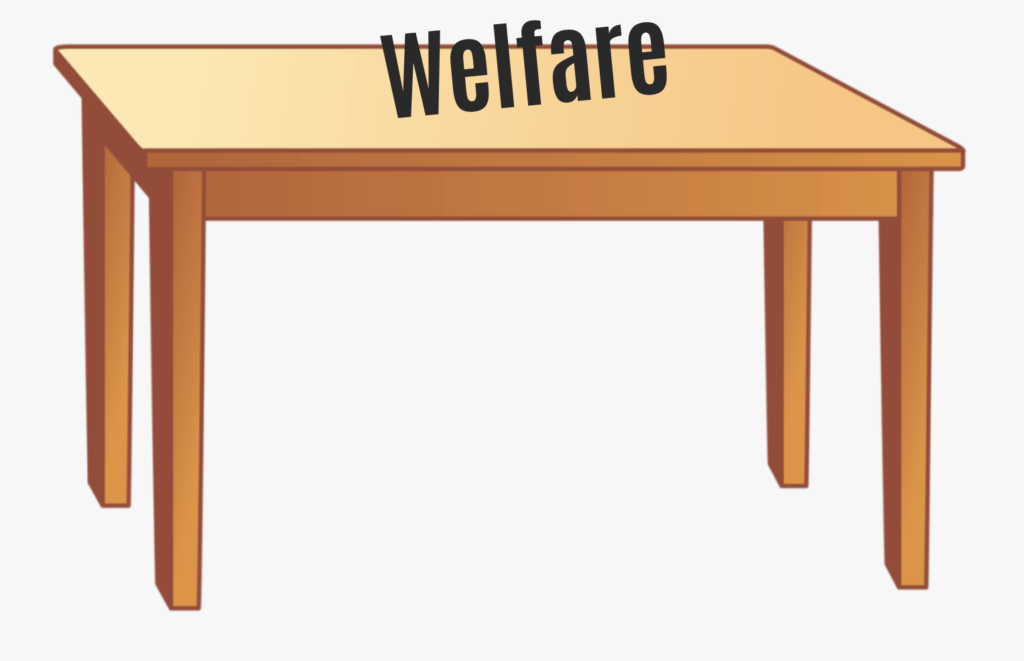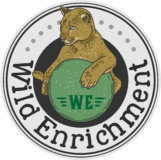
Are you Leaving Welfare on the Table?
When caring for any animal in captivity, we all know it is imperative to keep their current welfare state in the back of your mind at all times, constantly looking for ways in which we can improve it or at the very least, stop it from declining. However, in my experience maintaining or improving an animal’s current welfare state is often about “preemptive strikes” and has to be proactive instead of reactive. When an animal starts showing signs of a decreased welfare state, such as stereotypic behaviour it can become extremely hard to bring that animal back to an acceptable state. To keep welfare at the forefront of my mind, I like to ask myself, did I leave any welfare on the table?
Leaving welfare on the table is an adaptation of the old saying of leaving money on the table. This saying generally refers to not negotiating a salary aggressively enough, not taking advantage of an opportunity to earn more money or charging less for a service that you are providing than the going rate. I think welfare should be thought of in the same way on a daily basis, as it’s something you have to earn in the way you take care of an animal and the “welfare opportunities” you take advantage of in doing so. For example, if you aren’t providing an animal with daily enrichment experiences, you are leaving welfare on the table because we know that daily enrichment almost always results in positive welfare outcomes for the animal. Now, to help make sure you aren’t leaving any welfare on the table, let’s take a look at the five categories that I believe result in the most welfare being left on the table.
Institutional husbandry standards and practice
Institutional husbandry standards and practices are the category that I think results in the most welfare “being left on the table”. The main reason for this is that these standards and the institutional mindset as a whole regarding animal welfare affect every animal on-site either positively or negatively, often regardless of the individual efforts of animal care staff. An animal care institution needs to have animal welfare at the forefront of every single decision they make and every action they take, without exception. There are many aspects to running a zoo that are extremely important, from revenues, visitor satisfaction, employee satisfaction and safety. Still, in order to ensure that welfare isn’t being left on the table, animal welfare needs to be held at the same level as a lot of these “stakeholders” and often take priority in decision making. With animal welfare at the forefront of an institution’s mind, animal care management needs to empower their staff to make animal welfare a priority and make sure it is held in the highest regard by everyone involved in animal care. If a manager or supervisor does not have animal welfare at the forefront of their mind, they can make positive changes in welfare hard for their staff to make which in turn will negatively affect staff morale and satisfaction. Management needs to clearly communicate animal welfare standards and practices that are expected of animal care staff and hold people accountable at all levels, that are not meeting these standards. For example, if you hear the phrase “oh they are just old school and don’t believe in training and enrichment” at your institution, this is a sign that this accountability process is not in place, and welfare is being left on the table.
Daily enrichment and training
This next category shouldn’t come as a surprise, as I have written many articles about daily enrichment and training being a powerful tool for positively affecting an animal’s welfare and why it is equally if not more important than other daily husbandry practices. Some animals may not need to receive training and enrichment every single day to be in a positive welfare state, however, they should be receiving an appropriate amount of enriching experiences in a given time frame to maintain that welfare state. These enrichment programs should be goal-oriented and assessed continuously in order to ensure that there is no welfare being left on the table. Priority training should be provided to animals where learned behaviours such as voluntary injection, blood draw and crating could prevent undue stress and injury during medical procedures and routine examinations, as these going poorly could sometimes severely affect the welfare of an animal.
Exhibit Design
If an animal’s exhibit is not designed in a way that positively affects its welfare or is only built with public viewing in mind, then the animal’s welfare is going to suffer, often regardless of other efforts. When designing an exhibit, the institution needs to make sure that the appropriate animal welfare stakeholders are participating in the process from beginning to end. An animal’s exhibit should not only have its basic needs met but also allow the animal to thrive in that environment. Building resilience and the ability to easily change the environment to keep it novel is crucial for an animal’s welfare in the long term. This is important to think about in the initial design phase of the exhibit as it’s generally much easier to build around these welfare needs initially than to have to add retrofits at a later date due to the animal’s welfare needs.
Team Dynamics
Taking care of an exotic animal is no easy task, and it takes a team of highly motivated and passionate people to do it right. That is why I have included team dynamics on this list. Is your team functioning at a high level? Do you all know your strengths and weaknesses? Is your team comprised of the right people in the first place? The answer to these questions is really important to know when you are trying to figure out if you are leaving welfare on the table or not. You need to be able to count on your team members to make the daily decisions and take the daily actions to make sure the animals in your care are receiving the best care possible. Your team also needs to create an environment and a dynamic where new ideas are welcomed and change is not only possible but easy. Animal welfare is dynamic and can change very quickly, so the team that is caring for them needs to be able to change as well.
Observation and Survallience
The final area where I think institutions leave a lot of welfare on the table is not actually observing their animals enough. It’s hard to take time out of your day to actually watch an animal for a significant period of time, especially when you have other animals to care for. As keepers, we often develop a “rose coloured” view of an animal’s daily life, we bring them food, set up enrichment activities, and train them, but when you aren’t there, there could be serious welfare problems that you aren’t even aware of including stereotypies or a negative reaction to a stimulus. That is why I always recommend institutions set up surveillance on as many animals as they can, footage from that can be used to monitor the animals with minimal staff time and previously unknown problems can be unearthed and dealt with quickly and backed with evidence. Do you know what the animal is doing at 3 am most nights? If you cant confidently answer this question, you may be leaving welfare on the table.
Conclusion
This list of focus areas is by no means exhaustive, and there can be many other areas within an institution that can directly affect animal welfare across the site, but these are the areas where I think the most welfare is left on the table. In order to ensure optimal animal welfare, institutions need to be structured and organized in such a way that animal welfare is at the forefront of the organization’s decision-making and culture. Daily enrichment and training programs need to be robust, evaluated constantly and held in equal regard to other daily husbandry tasks, and these practices need to be carried out by a great team of people that are able to function at a high-level day in and day out. Exhibits need to be designed in such a way that welfare over the long term is accounted for and never compromised on. Animal welfare is a continuously evolving science and proactively keeping on top of the welfare needs of every animal in a collection is a tremendous undertaking, but looking critically at the people and processes around you as well as your own skillset is a great place to start. Below I have designed a checklist to help you do just that!
